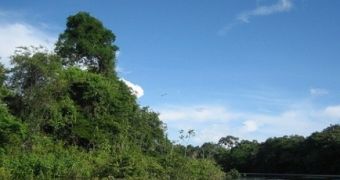Until just recently it was virtually impossible to exactly determine how much carbon was locked away in various areas of land which happened to be covered by dense vegetation.
The good news is that researchers from the Carnegie Institution for Science, together with several other Colombian scientists, seem to have succeeded in using state-of-the-art techniques and technologies to develop a highly accurate map of the CO2 presently trapped in the tropical vegetation of the Colombian Amazon.
It is not difficult to guess that, thanks to the data collected in this manner, forest management and conservation might be taken to a whole other level.
As well as this, the REDD+ program, which we reported on in one of our previous articles, might soon be much more successful than it presently is.
On its official website, the Carnegie Institution for Science reports that Greg Asner, one of the people involved in carrying out this innovative project, explained how, "This new study not only explores a poorly understood region of the Amazon, it also demonstrates our newest method for mapping forest carbon stocks at a spatial resolution approaching the size of the larger individual rainforest trees.”
Furthermore, “with a revised, top-down methodology that combines the best available technologies, we and our partners achieved new accuracies that radically advance forest monitoring and carbon policy readiness in Colombia.”
According to the same source, these soon-to-be very useful carbon maps were developed using both a Light Detection and Ranging technology (LiDAR) and a satellite image analysis technology known as CLASlite.
These allowed scientists to develop three-dimensional images of the forest canopy and pin down the exact deforestation, logging and degradation patterns.
Apparently, the combined use of these two technologies is much more efficient than your old-school field expeditions targeted at gathering various data, more so since the information obtained in this manner is quite unlikely to be biased.

 14 DAY TRIAL //
14 DAY TRIAL //